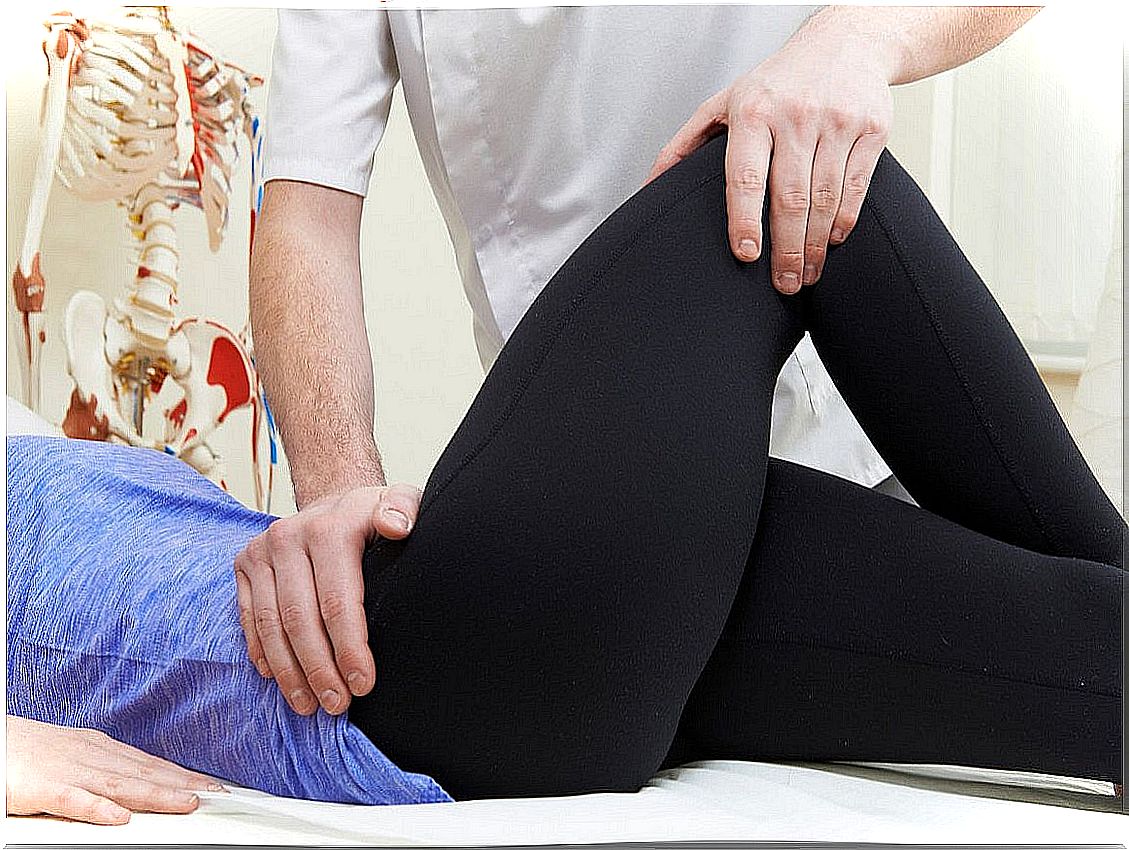Exercises For Hip Bursitis
There are exercises that are helpful for relieving pain from hip bursitis. The appropriate thing is that it is the physiotherapist who indicates which are the most appropriate for each case.

There are a series of exercises that we can perform to relieve the pain and discomfort of hip bursitis. This is a disease characterized by inflammation of the bursa , a jelly-like bag that is intended to protect muscles, tendons, and bones from each other.
In this particular case, the problem is in the bag between the femur and the pelvic bones. Its operation is the same as a pad that reduces friction.
Hip bursitis is a condition that bothers and bothers those who suffer from it, as it produces intense and stabbing pain. It is women who present it most often and it is associated with aging and osteoporosis, as well as other morbidities, such as arthritis and osteoarthritis.
Types of bursitis
Hip bursitis is not the only form of bursitis that can be suffered. This disease also affects the knees, shoulders, wrists, and elbows. Hip occurs because the tensor fascia lata muscle (located on the inside of the leg) rubs against the trochanter (bone protrusion of the femur head).
Also known as trochanteritis or trochanteric bursitis , its clinical forms of presentation are two. One is caused by some trauma to the area; and the other is caused by an overuse or improper use of the hip muscles.
It is important to determine, through a good physical examination by the doctor, to which of these types the condition is due. Accurate diagnosis is relevant when it comes to finding the solution for this disease and thus preventing it from becoming chronic. Once the joint has entered the process of persistence of symptoms, it becomes very difficult to go back and regain original and natural functionality.

Exercises for hip bursitis
Rest is the initial measure to reduce or eliminate the pain caused by hip bursitis, before starting with the exercises. If the pain is intense, it means that the trochanteritis is in its acute phase and it is best to allow the hip to rest. To do this, you can use an anatomical and memory cushion for rest.
Once the acute phase is over, it is indicated to perform exercise routines in order to completely relieve the pain caused by hip bursitis. To make the practice safe, the following is recommended:
- Perform the movements smoothly and slowly.
- Breathe normally, inhaling and exhaling so as not to tense. It is necessary to stop if the pain becomes severe.
- Before starting the exercise routine for hip bursitis, a warm-up should be performed.
Now, what follows is to perform standing stretches. One possibility is to cross one leg behind the other and lean the body to the unaffected side. Or, lie down with your back flat on the floor or mat and stretch the IT band or hips as far as possible.
More exercises
Another possibility is to stretch, always lying down, the hip rotator, which is a muscle in the external area that allows the thigh to be moved away from the center of the body. Always taking care not to force the movement too much so as not to exacerbate the injury that could be in the background.
Some of the exercises that strengthen the area are, also, the straight leg lift, lying on the side, and the hip adduction or lifting of the inner thigh. It is essential to regulate the number of series to establish breaks between one and the other, so that the soft parts of the joint relax.

Complementary measures to exercise for hip bursitis
The physiotherapist is the one who must indicate which are the most appropriate exercises for each case. Manual physiotherapy is combined with the use of anti-inflammatories and even analgesics. Surgery is generally the last option, if the above does not give positive results.
In addition, exercises for hip bursitis can be complemented with the application of local cold in the area to reduce pain, especially in the acute stage. And if the doctor recommends it, injectable medication is somewhat more powerful when the discomfort is disabling.
It is recommended to take into account some routines or habits to prevent hip bursitis from returning. Some of them are the following:
- Avoid overloading the area.
- Control body overweight.
- Sit comfortably so as not to put too much pressure on your hips.
- Wear suitable footwear and correct bad posture.
An effective, practical and cheap treatment
The routine practice of exercises for hip bursitis is one of the most effective measures to control the disease. In this way, muscle atrophy and progression to osteoarthritis are prevented. It is a very economical method, which does not represent associated expenses for the patient, which can be performed in the comfort of the home and which serves in the long term to prevent relapses.









